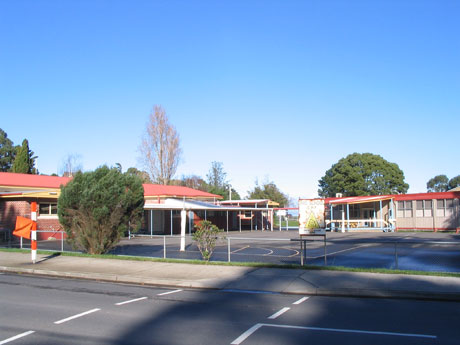Schools
Group 1
Akiuk Memorial School, Alaska, USA
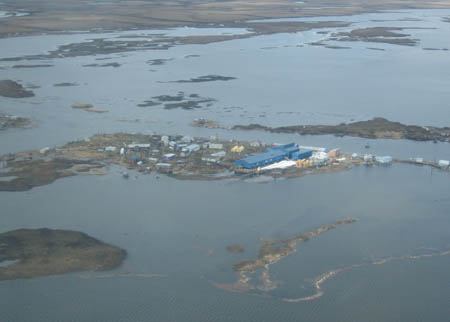 Located in the Yupik village of Kasigluk on the delta of the Kuskokwim River in western Alaska, this island school is home to about 50 students from K-12. Yupik is the first language of the students who live a life focused on the waterways. Frozen in winter, the rivers allow transport on snow machines and sleds to neighbouring hunting grounds and villages. In summer the open waters are filled with King salmon, whitefish and other staples of the village’s diet. Getting about means either a boat or light plane.
Located in the Yupik village of Kasigluk on the delta of the Kuskokwim River in western Alaska, this island school is home to about 50 students from K-12. Yupik is the first language of the students who live a life focused on the waterways. Frozen in winter, the rivers allow transport on snow machines and sleds to neighbouring hunting grounds and villages. In summer the open waters are filled with King salmon, whitefish and other staples of the village’s diet. Getting about means either a boat or light plane.
Cape Barren Island Primary School, Tasmania, Australia
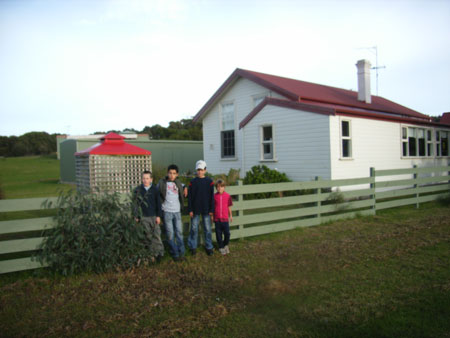 Situated between mainland Australia and mainland Tasmania, in the Bass Strait, Cape Barren Island is a small island off the larger Flinders Island. The primary school has 12 students from K- 6, with a nearby high school for grades 7-10. Students are all Tasmanian Aboriginals and practice traditional activities like muttonbirding in the late summer months on some of the nearby uninhabited islands. Transport is via light plane to Launceston, the northern Tasmanian city.
Situated between mainland Australia and mainland Tasmania, in the Bass Strait, Cape Barren Island is a small island off the larger Flinders Island. The primary school has 12 students from K- 6, with a nearby high school for grades 7-10. Students are all Tasmanian Aboriginals and practice traditional activities like muttonbirding in the late summer months on some of the nearby uninhabited islands. Transport is via light plane to Launceston, the northern Tasmanian city.
Group 2
Margate Primary School, Tasmania, Australia
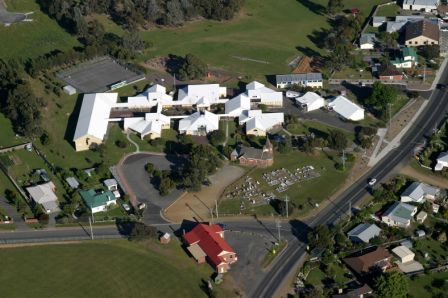 Margate is a small town 20km south of Hobart, the capital city of Tasmania. Surrounded by native bushland and the beautiful marine environment of North West Bay, the school has a population of 450 students from Kindergarten to Grade 6. In the summer months we all have to wear sun hats when ever we are outside, and if children don’t they have to play in the shade.
Margate is a small town 20km south of Hobart, the capital city of Tasmania. Surrounded by native bushland and the beautiful marine environment of North West Bay, the school has a population of 450 students from Kindergarten to Grade 6. In the summer months we all have to wear sun hats when ever we are outside, and if children don’t they have to play in the shade.
Apart from our big focus on teaching Maths and English our school runs a big range of specialist programs, children have Music, Physical Education, Art and Japanese lessons. We also run an options program where children get to take part in programs that aren’t usually offered in school- things like Dance, Tae Kwon Do, Beading, Cartooning and Philosophy. Sport also plays a big part in our lives, our grade 6’s organise a fitness program for 3 days of the week, and most children play either soccer, hockey or Aussie Rules on a Saturday. Our school houses Casey, Davis and Mawson are named after Australian Antarctic Bases.
Our school has a big environmental focus. We recycle all waste paper and our food scraps are composted (and they will soon be fed to our chooks). We have adopted a Patch of land at Dru Point that we look after, which includes weeding it. We have also been involved in planting native blue gum trees to help save the swift parrot. Every year in March we also take part in the annual Clean Up Australia Day campaign.
McNeil Canyon School, Alaska, USA
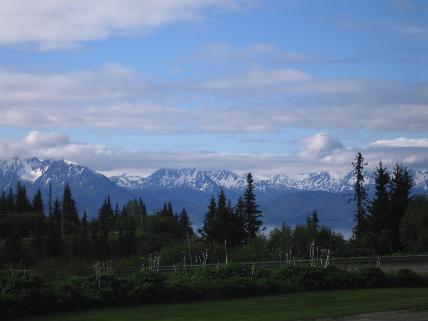 McNeil Canyon Elementary School, located 12 miles east of Homer, Alaska, was constructed in 1983. Homer is located on the north shore of Kachemak Bay on the southwestern Kenai Peninsula, at the southern most point of the Sterling Highway. The facility was originally built to house 225 students and currently serves 108 students in grades K-6.
McNeil Canyon Elementary School, located 12 miles east of Homer, Alaska, was constructed in 1983. Homer is located on the north shore of Kachemak Bay on the southwestern Kenai Peninsula, at the southern most point of the Sterling Highway. The facility was originally built to house 225 students and currently serves 108 students in grades K-6.
McNeil Canyon Elementary has a reputation for having an innovative approach to education with a particular emphasis in the Arts. With strong community support and a very capable and experienced staff, McNeil Canyon Elementary students perform at some of the highest academic levels in the state, both individually and collectively. In fact, McNeil Canyon Elementary was chosen as a 2004 National No Child Left Behind Blue Ribbon School. McNeil Canyon also has the distinction of having a population of Russian Old Believer students, about 25% of the enrollment. The relatively high altitude, 1350 feet, of the school site provides lots of snow and ice so students are able to skate and ski for almost half of the school year.
Group 3
Margate Primary school, Tasmania, Australia
(two classes from Margate are participating in this project -see information above)
Badger Road Elementary Primary School, North Pole, Alaska, USA
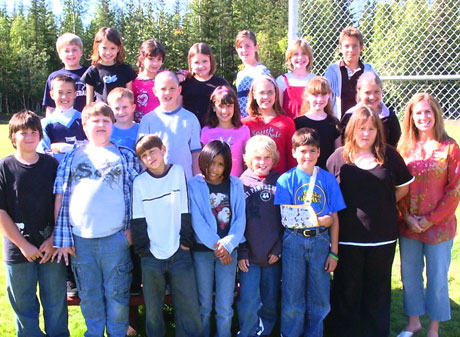 Badger Road Elementary School was built in 1983 and serves families with children in kindergarten through fifth grade. Our enrollment is about 575 students. We have two special education programs: primary intensive resource and intermediate intensive resource. We have 79 staff members: 54 full-time and 25 part-time.
Badger Road Elementary School was built in 1983 and serves families with children in kindergarten through fifth grade. Our enrollment is about 575 students. We have two special education programs: primary intensive resource and intermediate intensive resource. We have 79 staff members: 54 full-time and 25 part-time.
Staff members at Badger Road Elementary School work together as a team to help all students grow academically and socially. The physical education and music teachers, along with the librarian and counselor, provide specialized instruction and services for all students. Everyone works to support the classroom teachers and special education teacher in order for them to provide the best possible instruction and learning environment for students.
Extracurricular activities and traditions are important to students everywhere for adding zest and excitement to school life. Students at Badger have a wide array of opportunities to select from to help them develop their talents and abilities outside their classroom and to make contributions to the school community. During the past school year, students were able to participate in an amplified variety of enrichment activities in our After School Program. Courses such as cooking, guitar, stamp making, chemistry, ice skating, and skiing were very popular.These courses gave students the opportunity to explore new areas of interest in a safe environment.
Traditions are well established at Badger. One of the most important ones is our monthly assembly. These are gatherings where students, staff, and volunteers are recognized for their accomplishments and support. Our third grade Potlatch, fourth grade Veterans Day program, and fifth grade Wax Museum are traditions that students and parents look forward to.These are real celebrations that give us a strong sense of togetherness and belonging. Another tradition is our VIP luncheon in the spring. We honor and thank our wonderful volunteers whose contributions make so much more possible for our students.
Group 4
Strahan Primary School, Tasmania, Australia
Strahan is a small remote town on the West Coast of Tasmania. Strahan is called the Gateway to Tasmania’s West Coast World Heritage Area. Strahan Primary School is on the esplanade and only a short walk to West Strahan Beach which lies on Macquarie Harbour. Strahan Primary has 63 students ranging from Kindergarten to Grade 6.
The students at Strahan undertake many different learning experiences. These include Buddy Reading once a week, where each student reads with a buddy for half an hour and Buddy Sports, where the students all participate in physical activities with their peers. The school also run two Active After School Communities sessions per week. These are to encourage the students to become more active. Once a week the school has a program called ‘Leap Ahead’ which is for Birth to 4 children and their parents to join in fun and educational activities together.
Each year we enter the Literacy and Numeracy Week event. We drew life size pictures of sea creatures on the asphalt with chalk.
The students enjoy playing Chess. The older students teach the younger ones the skill of the game. Over the past few years Strahan has qualified for State Chess competitions.
Our students are very aware of the environment. Starting in 2006, students from Grades 4/5/6 undertook a series of projects to raise community awareness of the Azure Kingfisher and improve the riparian zone of Melaleuca Creek which borders our school. Through an innovative program of environment projects and hands on work, students have transformed a section of Melaleuca Creek and significantly raised the profile of the Azure Kingfisher throughout the Strahan Community. In 2007 the school won the ‘Environment Education and Training Award’ as part of the Tasmanian Awards for Environmental Excellence. As a result the project was entered into the National ‘Banksia People’s Choice Environmental Award’. The project came second.
Although our playground is small, one of the favourite places to play is on the wooden boat. The boat represents Macquarie Harbour and the connection of Strahan to the harbour and sea.
Ket’acik & Aapalluk Memorial School, Western Alaska, USA
Ket’acik /Aapalluk Memorial School is located in Kwethluk on the banks of the Kuskokwin River in the 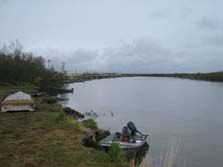 Western tundra region of Alaska. The K–12 community school has about 200 students with 32 members of staff. Student’s first language is Yupik, and the Yupik community life is still focused towards the resources from the river as it has for centuries. In particular the river provides food from the annual King Salmon and whitefish seasons and acts as a transport corridor for boats in summer and snow machines in winter.
Western tundra region of Alaska. The K–12 community school has about 200 students with 32 members of staff. Student’s first language is Yupik, and the Yupik community life is still focused towards the resources from the river as it has for centuries. In particular the river provides food from the annual King Salmon and whitefish seasons and acts as a transport corridor for boats in summer and snow machines in winter.
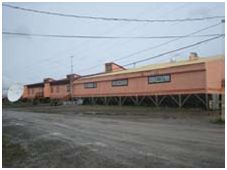 Kwethluk Community School takes pride in all of the students, and will continue to strive in eveloping mutual respect and the well being of each child: academically, physically, emotionally, culturally, and spiritually.
Kwethluk Community School takes pride in all of the students, and will continue to strive in eveloping mutual respect and the well being of each child: academically, physically, emotionally, culturally, and spiritually.
Group 5
Badger Road Elementary Primary School, North Pole, Alaska, USA
(Three classes from Badger are participating in this project -see information above)
Peregrine Community School, Tasmania, Australia
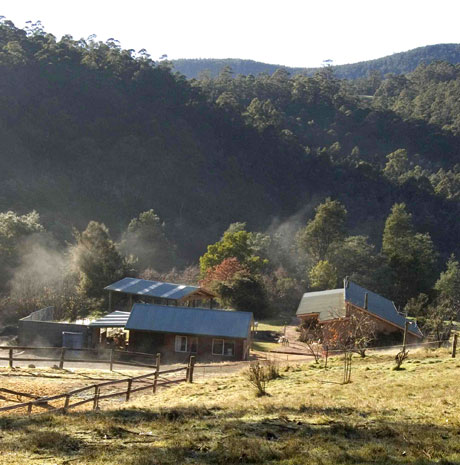 Peregrine School is a small independent school located on a large bush property at Nicholls Rivulet (Southern Tasmania). Our property allows for many outdoor activities on the school site and we have recently established a beautiful walking track through our bush.
Peregrine School is a small independent school located on a large bush property at Nicholls Rivulet (Southern Tasmania). Our property allows for many outdoor activities on the school site and we have recently established a beautiful walking track through our bush.
Peregrine School currently had 27 students ranging in age from 4 – 14 years old. The students learn in mixed-age classes and participation in learning activities is always based on the child’s individual strengths and weaknesses rather than on age.
We have classes in music, horse riding, gardening, German, Auslan (Australian Sign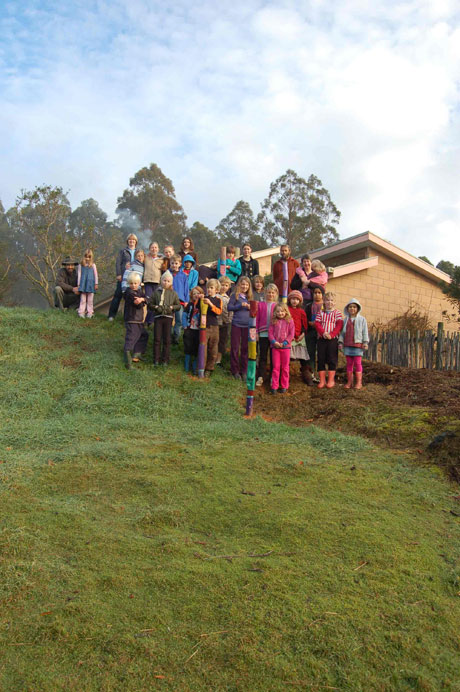 Language), art, sport, woodwork as well as literacy, numeracy, history and science. We cook lunch each day using fresh fruit and vegetables and the students are involved in menu planning and preparation.
Language), art, sport, woodwork as well as literacy, numeracy, history and science. We cook lunch each day using fresh fruit and vegetables and the students are involved in menu planning and preparation.
We dedicate every Friday as our school Project or Excursion Day. Project Days involve a mixture of school and community based projects. Some of these projects have included building a brick kiln, shelving, soccer goals and gumboot rack, painting a shed, designing and fencing a garden, cooking a medieval feast, tree planting and Clean Up Australia Day.
Group 6
Badger Road Elementary Primary School, North Pole, Alaska, USA
(Three classes from Badger are participating in this project -see information above)
Deloraine Primary School, Tasmania, Australia
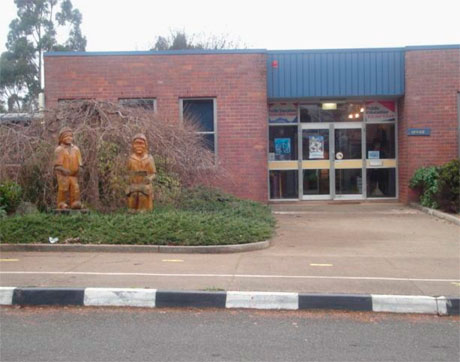 Deloraine Primary School is situated in the rural township of Deloraine in the north of Tasmania. The school was built in 1974 and is surrounded by 10 hectares (25 acres) of beautifully landscaped gardens and sporting fields. The school has recently opened a fully heated, half sized Olympic swimming pool and workmen are currently constructing a new hall. The school has 335 pupils and caters for all grades from Kindergarten to Grade 6.
Deloraine Primary School is situated in the rural township of Deloraine in the north of Tasmania. The school was built in 1974 and is surrounded by 10 hectares (25 acres) of beautifully landscaped gardens and sporting fields. The school has recently opened a fully heated, half sized Olympic swimming pool and workmen are currently constructing a new hall. The school has 335 pupils and caters for all grades from Kindergarten to Grade 6.
Group 7
Kenai Middle School, Alaska, USA
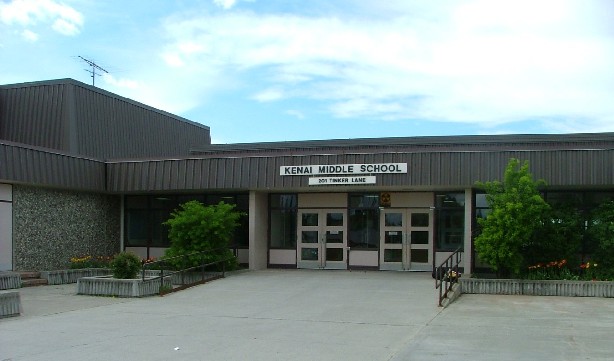 Kenai Middle School is located on the Kenai Peninsula (lots of wildlife) near the Kenai River (world class King Salmon!) in South Central Alaska. It is about 3 miles from the City of Kenai and 160 miles from Anchorage. The school is a grade six through grade eight school with approximately 360 students.
Kenai Middle School is located on the Kenai Peninsula (lots of wildlife) near the Kenai River (world class King Salmon!) in South Central Alaska. It is about 3 miles from the City of Kenai and 160 miles from Anchorage. The school is a grade six through grade eight school with approximately 360 students.
The sixth grade students have a slightly different schedule than the seventh and eighth graders with fewer teachers and more educational support.
The school has a wonderful staff and offers core subjects as well as exploratories such as shop, P.E., art, Spanish, home economics, choir and band. A large part of the student population participates in the band and/or choir.
KMS also offers extracurricular sports and activities such as cross country running, soccer, basketball, volleyball, wrestling, cross country skiing, and track and field. Other activities include Mind-A-Mazes, Future Problem Solving, Math Bowl, spelling and geography bees, and robotics. We also have after school programs for homework and tutoring.
KMS has created a friendly, supportive and inclusive culture for students, staff and parents. We have fun traditions, student leadership, activity nights, dances, clubs, and mini-courses at the end of the year. KMS is a great place to learn and grow!
Woodbridge District School, Tasmania, Australia
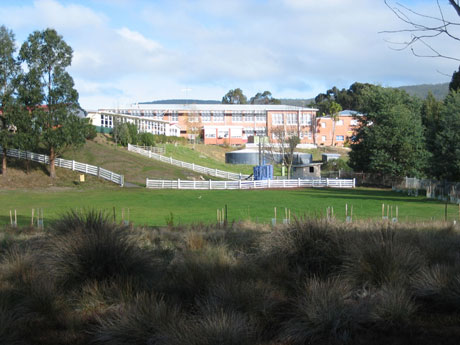 Woodbridge School is situated in the stunning environment of the Southern D’Entrecasteaux Channel, in Southern Tasmania. The School has a strong community focus, and caters for the needs of students from a wide geographical area, and from Kindergarten to Year 10.
Woodbridge School is situated in the stunning environment of the Southern D’Entrecasteaux Channel, in Southern Tasmania. The School has a strong community focus, and caters for the needs of students from a wide geographical area, and from Kindergarten to Year 10.
Principal, Chris Barnes and staff provide a welcoming atmosphere. Specialist teachers in music, drama, design, art, home economics, computing, physical education, landcare and science provide students with a rich educational experience.
Group 8
Woodbridge District School, Tasmania, Australia
(Three classes from Woodbridge are participating in this project -see information above)
Nordale Elementary School, Alaska, USA
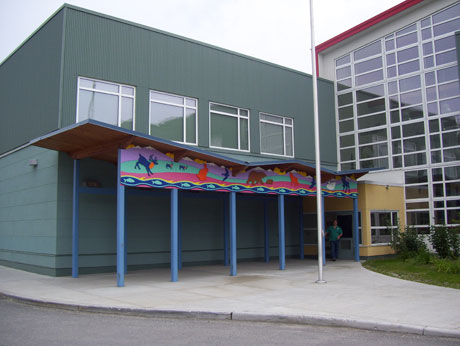 Nordale has been in operation for about fifty years. The first building was replaced in 2005 with a new facility. We are considered a city school serving roughly 400 kindergarten through 6th graders.
Nordale has been in operation for about fifty years. The first building was replaced in 2005 with a new facility. We are considered a city school serving roughly 400 kindergarten through 6th graders.
We typically have two classes of 6th graders.I teach math and science for both classes.We have been involved in a Pacific Salmon rearing program for a number of years. This involves an in-depth study of salmon, gathering eggs in the fall, incubating them throughout the winter, and releasing them in the spring after the ice goes out. We are also very fortunate to have a graduate student from the University of Alaska that works with my science classes. She is a glaciologist and has a wealth of knowledge about geology, glaciers, and snow and ice studies.
Group 9
Woodbridge District School, Tasmania, Australia
(Three classes from Woodbridge are participating in this project -see information above)
Woodriver Elementary School, Alaska, USA
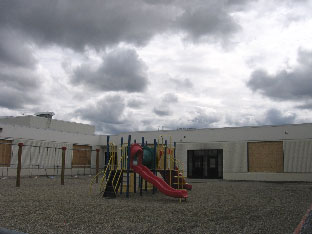 Our students are Caucasian, Alaskan Native, Asian, African American, Hispanic, and American Indian so we’re a diverse group. Many students walk to school from the surrounding homes but we also have busing for those who live within the school boundary (mostly from the hills to the West). We have 460 students in kindergarten - 6th grade with a staff of 50 teachers and support personnel. Classroom teachers provide instruction in language arts, math, science, social studies, health, technology, and art. We have specialists for music, physical education, library media, special education, and District art teachers that visit several times a year.
Our students are Caucasian, Alaskan Native, Asian, African American, Hispanic, and American Indian so we’re a diverse group. Many students walk to school from the surrounding homes but we also have busing for those who live within the school boundary (mostly from the hills to the West). We have 460 students in kindergarten - 6th grade with a staff of 50 teachers and support personnel. Classroom teachers provide instruction in language arts, math, science, social studies, health, technology, and art. We have specialists for music, physical education, library media, special education, and District art teachers that visit several times a year.Our students enjoy recess outdoors until the temperature drops to 20 below (Fahrenheit). One popular spot is the hockey rink for ice skating. They also enjoy the sledding hill, soccer, and touch football. They can join band or orchestra in 4th through 6th grade. We provide school instruments and group lessons are part of the regular school day. Students start at 9:00 and are dismissed at 3:30. They have an hour break for recess and lunch at mid day. Many students bring lunch from home but school lunches are available for purchase or are provided for qualifying low income students.
(Fahrenheit). One popular spot is the hockey rink for ice skating. They also enjoy the sledding hill, soccer, and touch football. They can join band or orchestra in 4th through 6th grade. We provide school instruments and group lessons are part of the regular school day. Students start at 9:00 and are dismissed at 3:30. They have an hour break for recess and lunch at mid day. Many students bring lunch from home but school lunches are available for purchase or are provided for qualifying low income students.
We’re close to the University of Alaska, Fairbanks (UAF) and provide a teaching school for pre-service teachers. UAF is also a business partner for Woodriver so we have science outreach opportunities, visits from athletic teams and the University firefighters throughout the year.
We’re Wolfpups! - our school mascot.
Group 10
Blackman’s Bay Primary School. Tasmania, Australia
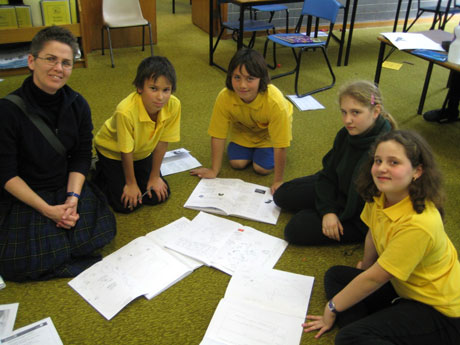 Blackmans Bay Primary School is situated on a hillside overlooking Blackmans Bay and the river Derwent, just south of Hobart. The school is made up of 14 classes ranging from kindergarten to grade 6. At present the school has an enrolment of 356 students.
Blackmans Bay Primary School is situated on a hillside overlooking Blackmans Bay and the river Derwent, just south of Hobart. The school is made up of 14 classes ranging from kindergarten to grade 6. At present the school has an enrolment of 356 students.
Anne Wien Elementary School, Alaska, USA
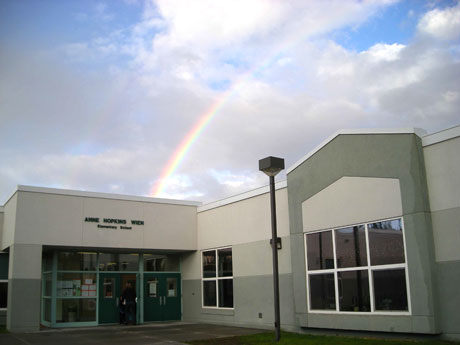 Anne Wien Elementary is an “urban” school in Fairbanks, AK, located within half a mile of Noyes Slough and Creamer’s Field Wildlife Refuge. We have about 400 students this year ranging from ages 4-12. We have an ethnically diverse school, including a Native Alaskan population.
Anne Wien Elementary is an “urban” school in Fairbanks, AK, located within half a mile of Noyes Slough and Creamer’s Field Wildlife Refuge. We have about 400 students this year ranging from ages 4-12. We have an ethnically diverse school, including a Native Alaskan population.Group 11
Queensland School of Travelling Show Children, Eastern Australia,
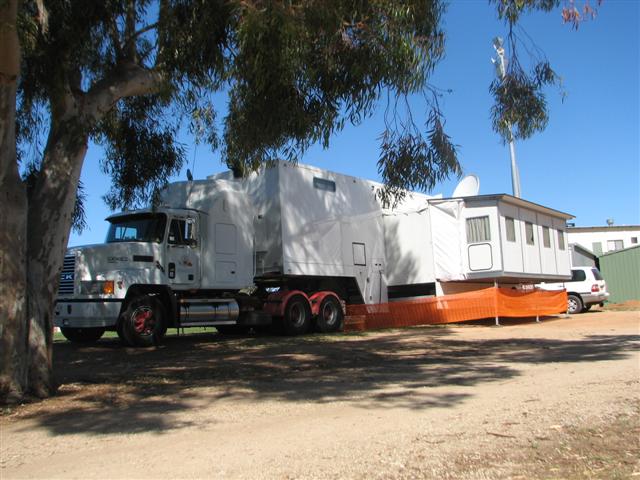 The Queensland School for Travelling Show Children is recognized as a unique school environment not only in Queensland and across the nation but internationally as well.
The Queensland School for Travelling Show Children is recognized as a unique school environment not only in Queensland and across the nation but internationally as well.
QSTSC is the only advocate for educational change for the children from families of occupational travellers who derive their livelihood from business practices centred on the agricultural show schedules throughout Australia. The school is rich in history and heritage.
QSTSC travels throughout Australia providing quality education to the children of families of occupational travellers who are members of the Showmen’s Guild of Australasia, itinerant families or equestrian families travelling the agricultural show circuits throughout the year.
Our two mobile classrooms house approximately 65 students ranging from 5 to 12 years of age. Our multi-age classrooms are currently travelling to a number of locations throughout Victoria and Tasmania. We are proud to be apart of this wonderful experience as we endeavour to provide Excellence in Education to all of our students.
North Pole Elementary School, Alaska, USA
 North Pole Elementary has pre-school to 5th. grades and is situated in the middle of the city of North Pole. It is one of 3 elementary schools. We also have one middle school and one High School. There are about 500 students enrolled at any given time and our population is diverse and dynamic to include students from the local community as well as those in the borough of Fairbanks, Eielson and Ft. Wainwright military.
North Pole Elementary has pre-school to 5th. grades and is situated in the middle of the city of North Pole. It is one of 3 elementary schools. We also have one middle school and one High School. There are about 500 students enrolled at any given time and our population is diverse and dynamic to include students from the local community as well as those in the borough of Fairbanks, Eielson and Ft. Wainwright military.
Our city is Santa Claus’ home and the theme year around is Christmas. We’re located in the Interior of Alaska right smack in-between the Alaska Mt. Range with Mt. McKinley, the tallest peak in North America to our south, and the Brooks Mts in the north. North Pole is only 15 miles from Fairbanks, the second largest city in Alaska.
North Pole is not at the magnetic North Pole but we do get a lot of folks asking if we are. Our weather is snowy and cold. We’ve had temperatures that have ranged from -40 degrees and even -60 one year. Jan. and Feb. are typically the coldest months. Students go outside for recess in temperatures up to -20 degrees provided there’s no wind chill factor. In April we have breakup which is when the snow and ice begins to break in the rivers and spring is knocking at our door. While our winters are cold and dark, our summers are warm with plenty of daylight–up to 22 hrs and we learn to sleep just fine with the light. We even run races, watch ball games and wash our cars at midnight to celebrate the longest day of the year.
While we aren’t part of the Arctic, THE Arctic, with its vast oil reserves and the Arctic National Refuge affects every Alaskan’s life. We’re watching our resources very carefully mindful of protecting our wildlife as well as minerals. Alaska is a beautiful State and this year we celebrate our 50th year as part of the United States. Happy Birthday Alaska!
Group 12
Queensland School of Travelling Show Children, Eastern Australia,
(Two classes from QLD travelling school are participating in this project -see information above)
Woodriver Elementary School, Alaska, USA
(Two classes from Woodriver are participating in this project -see information above)
